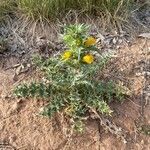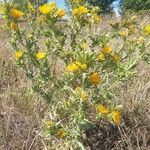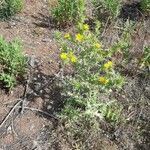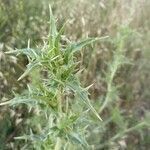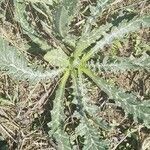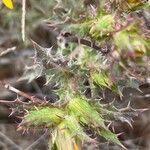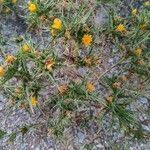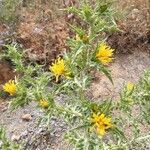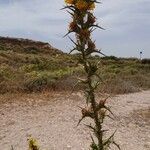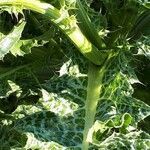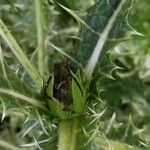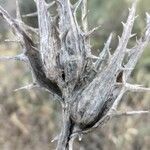A plant with spiny leaves, stems and flower bases. It keeps growing from year to year. The stems have wings and are spiny. It grows 30-100 cm high. It has a deep taproot. The roots resemble parsnips. They are long and taper and are 8 cm thick. The leaves are rigid, spiny and with deep teeth. The leaves have pale coloured veins. The flowers are bright yellow. They occur singly at the ends of branches or in the axils of upper leaves. There are stiff prickly bracts around the flowers.
Biennials or perennials. Stem wings not continuous, margins spinose, little, if at all, white or thickened. Leaf blades 40–200 × 15–70 mm, margins little, if at all white or thickened. Involucres 15–20 × 8–10 mm, larger in fruit. Phyllaries lanceolate, glabrous. Cypsela/palea units ± orbiculate to ovate, 3–5 mm; pappi of 2–4 setiform-aristate scales plus 0–4 muticous to lanceolate scales. 2n = 20.
